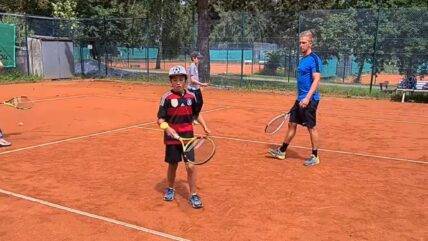In tennis, the serve is one of the most important weapons, as it allows the player to dominate the game from the beginning and control the point. Here are some important aspects to consider when serving in tennis:
- Technique: Proper technique is critical to a successful serve. The player should have a stable and powerful stroke movement where he/she hits the ball into the opponent’s half in a fluid motion.
- Placement: good placement of the serve can put the opponent on the spot and make it difficult for him/her to win the point directly. Therefore, the serve should be placed in such a way that it is either difficult to return or keeps the opponent off balance.
- Speed: The speed of the serve can also play an important role, especially with an ace or an unattainable serve. The faster the serve, the harder it is for the opponent to return it.
- Spin: The use of spin can make the serve unpredictable and difficult to return. For example, a topspin serve can bounce high and fast, while a slice serve can bounce flat and awkward.
- Mentality: A positive and confident attitude can help with the serve. The player should focus on his/her strengths and have confidence that he/she can place the serve successfully.
- Consistency: A consistent serve can put pressure on the opponent as he/she has to adjust and not know what is coming next. A player should therefore work on executing his/her serve regularly and accurately.
These aspects of the tennis serve are important in surprising and pressuring the opponent and making it easier to win points. By practicing regularly and applying these techniques, a player can improve his/her serve and be more successful in the game.
Practice recommendations for the tennis serve
- Basics: make sure you have mastered the basic steps and techniques of the serve. Pay attention to your foot placement, your stroke motion, and your contact with the ball.
- Target practice: practice the placement of your serve by targeting specific areas of the tennis court. Try to place your serve as accurately as possible to surprise and pressure your opponent.
- Speed training: use a speed tracker to measure your serve speed. Set goals for your speed and work on improving your power and quickness.
- Spin training: practice different types of serves, such as topspin, slice or kick serves, to surprise your opponent and produce unpredictable shots.
- Mental training: use visualization techniques to focus on your serve and mentally prepare for your game. Focus on your strengths and positive outcomes.
- Practice with a partner: play serve drills with a partner to focus on proper rhythm and placement. Take turns practicing different serve and return variations.
- Take breaks: Give yourself enough breaks and rest between practice sessions to avoid injury and maintain your physical and mental health.










